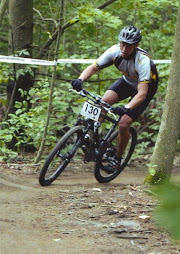Heinrich Albrecht and Chester Fabricius, founders of the TransRockies Challenge, have a long and legendary history in the mountain biking world, starting with their organization of the first mountain bike race in Europe in the 1980s. From there, both went on to organize World Cup events in Europe and in North America.
In 1998, the fruition of all this experience resulted in the birth of the first TransAlp Challenge in Europe. Two-hundred and twenty teams of two riders from eight different countries crossed the European Alps in eight days. The 580-kilometre long route with over 20,000 metres of climbing became the most challenging mountain bike event worldwide. The event is a sell-out every year, with 550 teams participating and more than 3,000 teams on a wait list.
The TransAlp Challenge today is arguably the most popular mountain bike event in Europe. Albrecht and Fabricius continued to work together on the event, and shortly after the third TransAlp Challenge was held, an exploration of the potential for creating a similar event in North America. After extensive research, Fabricius and Albrecht identified the Canadian Rockies as a perfect site for TransAlps’ sister event, the TransRockies Challenge.
The first annual TransRockies Challenge was held in August 2002, and it has continued annually since then. The events are testaments to incredible strength and determination, as riders face 7 days, 600 km, and 12,000m of climbing.
The 2003 event was the race that happened "against all odds", as the wildfire conditions in the Canadian Rockies region forced organizers to re-route the first 3 days of the race at the last minute. In 2004, heavy rain turned a portion of the route into a muddy quagmire. Riders were forced to walk long sections of the route, which became impassable. The 2005 event was not mud-free, although the majority of the route was ride-able.
In 2006, the route saw a major re-design, moving the majority of the event into the Kootenay Rockies region of British Columbia. The change took the race deeper into the spectacular wilderness of the Canadian Rockies. The new course received rave reviews as the event topped the 200 team level for the first time.
In 2007, the TransRockies Challenge will use similar routing to the 2006 event, traversing the Kootenay Rockies, with two crossings of the continental divide. The sixth annual event is expected to sell out all of the 275 available team spots.
My brother Blaine, and his friend Ted are gearing up for the 2008 Challenge.
Subscribe to:
Post Comments (Atom)




No comments:
Post a Comment